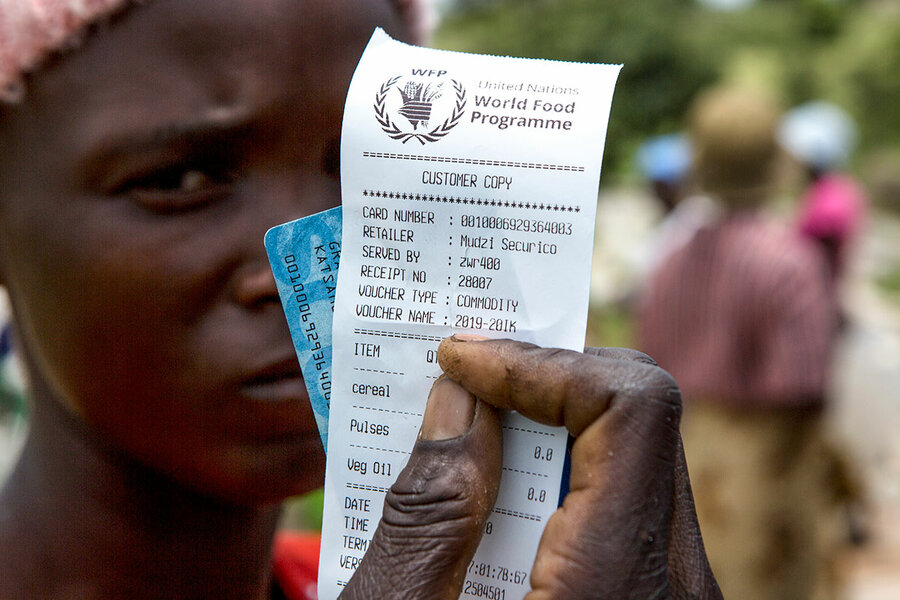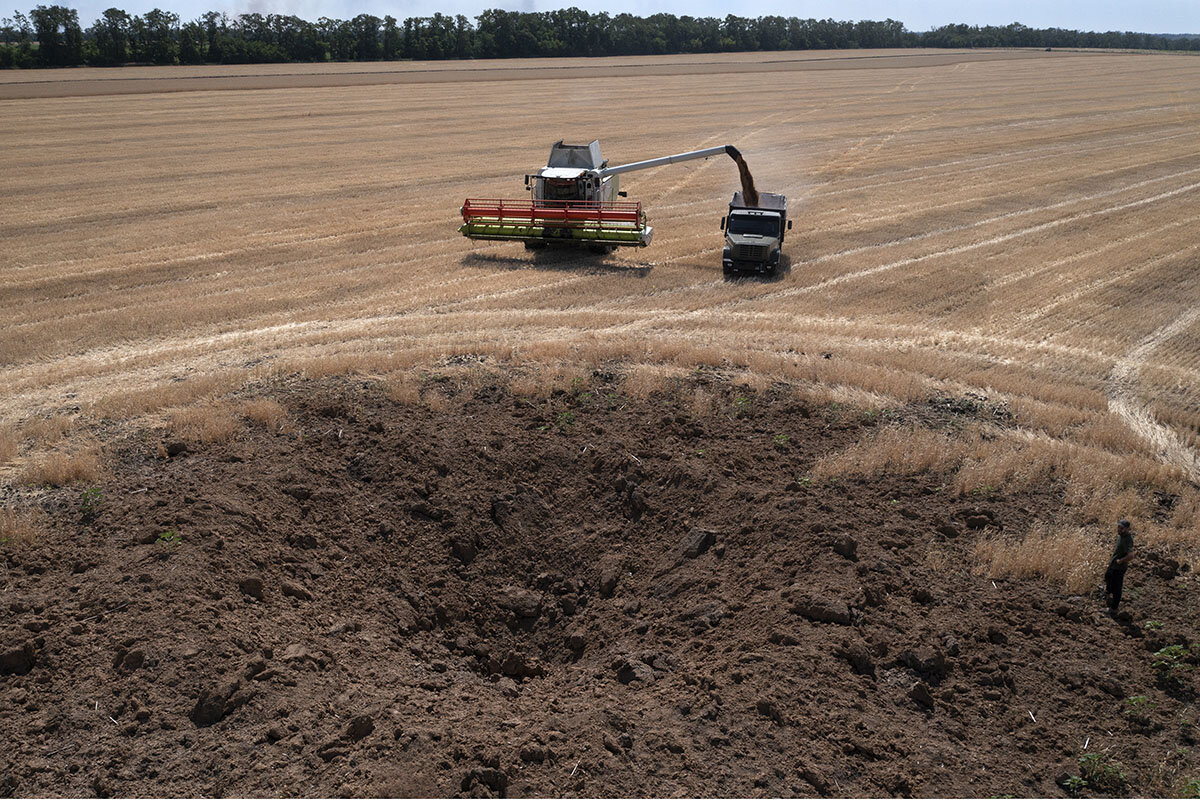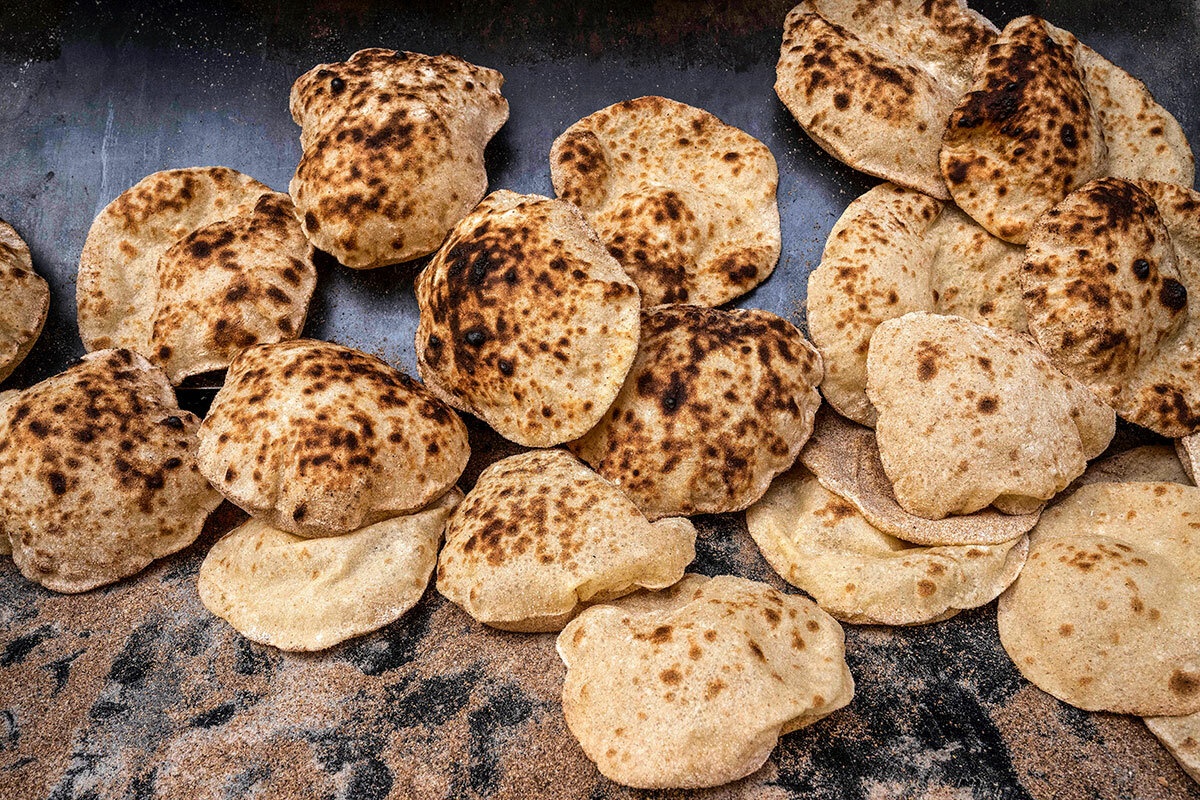Global response to soaring food prices: Generosity is just a start
| WASHINGTON
In Zambia – where more than half the population is undernourished, and 1.2 million people are experiencing acute food insecurity – farmers already produce more than 80% of the country’s food needs.
But Zambian and international agricultural and food-production experts are convinced that with the right seeds, better technology, improved storage and delivery infrastructure, and stronger climate resilience, the farmers can do much more.
That means not only meeting more of the southern African country’s domestic food requirements. It means encouraging what experts say is its potential to become a regional food powerhouse that can help meet more of the food shortfalls in neighboring countries.
Why We Wrote This
A story focused onTo address global food insecurity made worse by the Ukraine war, leaders and organizations are looking beyond mere aid, focusing on increased food production and improved supply chains to bolster nations’ resilience.
Diversifying the world’s exportable food production beyond a few giant producers, and assisting farmers in ramping up production to meet more of their countries’ domestic needs, have gained new urgency as a result of Russia’s war in Ukraine – involving two of the world’s biggest food producers and exporters.
With the war largely eliminating the two countries’ wheat, oilseeds, and fertilizer production from global markets, supplies of staples have grown tight – sending food prices skyward everywhere.
As a result, an already daunting global food security landscape has deteriorated further, spreading from conflict-ravaged populations in countries like Yemen and Afghanistan to family tables in North Africa, other parts of the Middle East, and South Asia.
The “multidimensional crisis” in food security, as leaders of the G-7 group of advanced economies called it at their summit in Germany last week, has left an estimated 345 million people worldwide at high risk of food shortages, according to the United Nations World Food Program. Moreover, some 750,000 people in Afghanistan, Ethiopia, Somalia, South Sudan, and Yemen are at risk of starvation, the U.N. says.
The dire situation has put food insecurity at the top of the global agenda to a degree it has not been since at least the 2008-09 crisis in food prices.
So while USAID Administrator Samantha Power was in Zambia last week promoting U.S. assistance to locally developed programs designed to boost the country’s food production and food security, G-7 leaders pledged $4.5 billion to address food shortages and help counter the impact Russia’s war is having on global food supplies and prices.
In Germany, President Joe Biden committed the United States to providing more than half of the new funding to address the crisis – $2.7 billion.
And in Zambia, Ms. Power announced an additional $9 million in new assistance: first, “to immediately address the high cost of fuel, fertilizer, and food,” she said in a speech, but then also to help unlock “Zambia’s potential … as an agricultural power [and] a leading exporter of food across its eight regional neighbors.”
Redirecting supply chains
But even with the surge in generosity from the U.S., Germany, and other wealthy countries, questions remain whether the short-term food aid and the more medium-term assistance to expand food production will be enough to meet the crisis.
Food security experts, along with officials from international food institutions and private philanthropic organizations, say the attention and resources world leaders are giving to the crisis – as for example at the G-7 summit – are a promising start.
But they add that more must be done soon to redirect food supply chains so that existing supplies can move where needed and start to calm food-price inflation.
And more funding will be needed, they say, if the world is to avoid levels of hunger many once thought were a thing of the past.
“We’re in an unprecedented moment” of a dramatic increase in food insecurity, says Dina Esposito, vice president for technical leadership at Mercy Corps and a former USAID food assistance expert. “A decade ago we thought we had contained famine, but now here we are today with eight to 10 places we’re watching for famine,” she says.
At the World Food Program, Chief Economist Arif Husain says the impact of Russia’s war in Ukraine “couldn’t have come at a worse time,” given the record number of people already displaced by conflict and climate crises, and debilitating levels of “debt distress” in 56 countries, in part as a result of the pandemic.
Add to that now the high levels of food-price inflation due in large part to the war in Ukraine.
“Right now about 40 countries are experiencing food inflation above 15%,” he says. “In countries where families spend 50 or 60 or even 70% of income on food, what are they supposed to do?”
One result is that this year WFP estimates the number of people requiring direct food assistance at 152 million – up from 128 million last year and 121 million in 2020.
In a growing number of places, the combination of higher food prices and increased numbers of people requiring food assistance means that organizations like WFP are having to cut food rations. “In Nigeria, WFP has had to cut rations in half,” Dr. Husain says. One tragic result: a rise in suicides among mothers who “cannot cope” with the inability to feed their children adequately.
Not yet a crisis of supply
In addition to cutting rations, food assistance organizations are also having to deal with major donors directing their largesse to the latest humanitarian crisis – Ukraine – at the expense of ongoing but sometimes forgotten crises.
“One of the effects of Russia’s war against Ukraine is a diversion of attention – and contributions – from other places,” says Ms. Esposito. She notes, for example, that Mercy Corps’ appeal for Ukraine was 90% funded “within a matter of days,” while donations for Somalia – one of the hunger hot spots – haven’t topped 20% of the organization’s appeal.
Still, Dr. Husain says that while higher food prices are making it more difficult for WFP and other organizations to feed the growing number of hungry people, the crisis is not yet one of supply. And, he says, world leaders must act now to ensure that the crisis doesn’t turn into one of shrinking food stocks.
“It’s easier to respond now when it’s an affordability crisis – and not letting it become an availability crisis,” he says.
A growing threat to food availability is what experts are calling “food nationalism” – the tendency of some food-producing countries to respond to higher food prices by imposing export taxes or taking other measures to discourage food exports and build up food stocks at home.
Yet Joseph Glauber, senior research fellow at the International Food Policy Research Institute in Washington, says, “Markets are actually performing pretty well. People can get grains; they’re just more expensive.”
He offers the example of Morocco, which he says turned to Ukraine last year following a serious drought that hit domestic production. But with Ukraine cut off, Morocco has had to turn elsewhere.
“You can get grain from Australia,” he says, “but it’s more expensive.” Canada is increasing grain production, he notes, but it will also be more expensive than Ukraine – which before the war provided 10% of global wheat exports.
Access to Ukraine
What that tells some food supply experts is that Ukraine is not going to be replaced anytime soon as an inexpensive global food basket.
“I’m really pleased with the level of political attention we’re seeing at the top,” says Caitlin Welsh, director of the Global Food Security Program at the Center for Strategic and International Studies and a former director of global economic engagement at the National Security Council. “But ultimately what the G-7 is doing, for example, can be successful as stopgap measures only.”
She and other experts say that proposals to build grain silos in countries neighboring Ukraine to store its crops, for example, or the slowly increasing exportation of Ukrainian grains by land, are fine but limited alternatives to sea export. Shipping grain by rail is three times more expensive than by sea, they note.
“The ultimate solution has to lie in unblocking Ukraine’s ports on the Black Sea,” says Ms. Welsh.
Noting that different proposals to allow a resumption of Ukrainian maritime shipments have stalled or been rejected outright by Russian President Vladimir Putin, she adds, “We can talk more long term about encouraging other places to become global breadbaskets, but the answer today lies in a cessation of hostilities – and some decisions from President Putin.”
Editor’s note: This article has been updated to clarify the location of Zambia within Africa. It is considered part of southern Africa.








